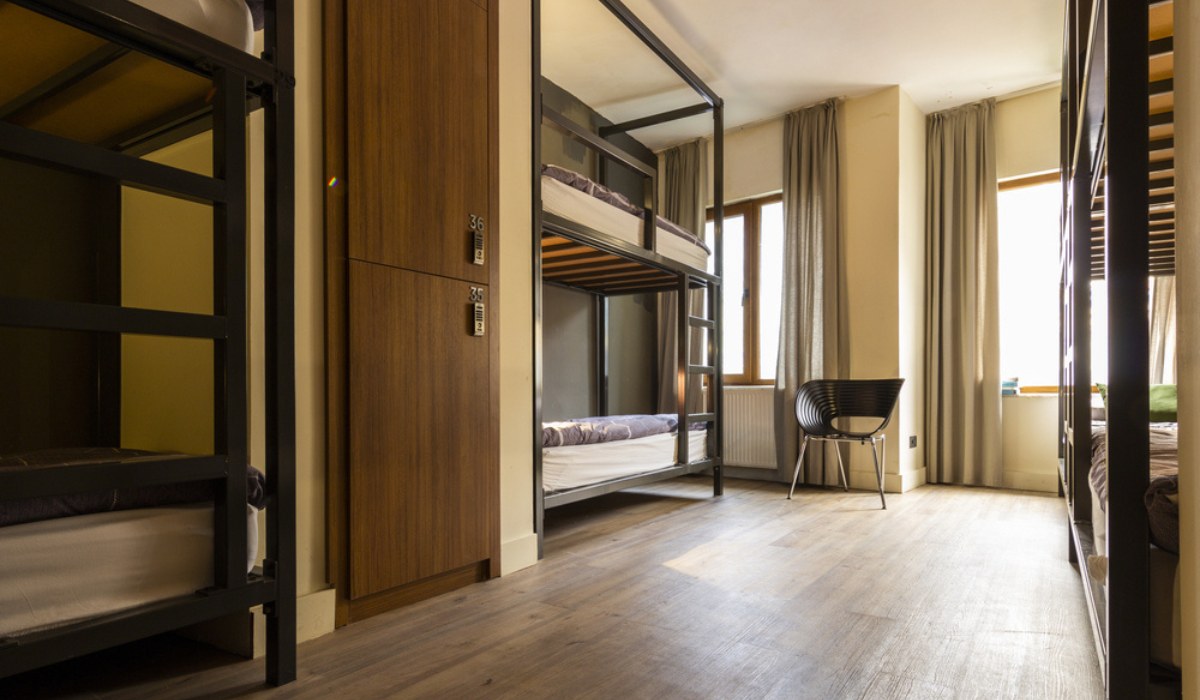With the start of another academic year in colleges and universities upon us, the search for good living spaces increases yet again as students begin to migrate for higher studies. But whether you’ve packed your bags to move out of your home town for a dream job or a dream university, you’ll always end up scratching your head about this one question- “Should I get a PG, Hostel or a Co-living space like a flat? Navigating housing in 2025 isn’t as easy as it used to be. Gone are the days when young renters simply looked for “a roof and a cot.” Today’s students and young professionals want more than just a roof above their head including privacy, connectivity, comfort, and community. That’s where three distinct options dominate the conversation, that is, Hostels, Paying Guest accommodations (PGs), and Co-Living spaces. Each has its own perks and pitfalls but which one truly suits the up and coming generation’s evolving lifestyle is absolutely subjective.
Vivek Raj, Chief Operating Officer, VLIV says, “Anyone who’s lived, worked, or even travelled abroad knows what well-managed rental housing can look like. And within India, lifestyles and aspirations have evolved. Yet people are still navigating outdated, fragmented options or paying too much for too little.”
But do not stress upon it because you are not the only one facing this dilemma. Finding a suitable place to live when moving to a new city or state can be daunting. Here is a guide to finding the most suitable living accommodation out of the three for you:
Hostels in 2025
In India, hostels have long been the default choice for students stepping into college life, especially in public universities (like the Delhi University) and engineering colleges (like IITs, NITs). Fast forward to 2025, while students do tend to prefer campus residences in the form of hostels even now, many are preferring the opposite as well for many reasons. Today’s hostels, especially in Tier 1 cities like Delhi, Mumbai, Bengaluru, and Pune, are still mostly college-affiliated. In 2025, life in a typical Indian hostel continues to revolve around the familiar rhythms of the “mess bell,” the use of shared bathrooms, and the challenge of finding rest and peace when trying to adjust with a roommate. But with growing awareness about hygiene, mental health, and lifestyle expectations, even traditional hostels have started evolving.
Some hostels even feature facilities like biometric entry and CCTV monitoring for safety, and mental health counselors on campus (at least in top-tier institutions). Besides this, hostels also offer the following:
- Affordability: Affordability remains the biggest advantage. For Rs. 2,000–Rs. 6,000/month, students get a roof, meals, and access to campus. It is clearly a deal you cannot beat in cities where PGs and rentals start at triple that amount, which can be quite a hefty amount for a student.
- Convenient location: One of the key advantages of student life in Indian hostels is their strategically convenient location. They are mostly situated within or in close proximity to the academic campus, these hostels offer easy access to essential facilities such as classrooms, libraries, laboratories, and the college canteen. This close placement greatly minimizes the need for daily commuting, thereby allowing students to better utilize their time and maintain a more structured routine. The convenience of having vital academic and recreational resources within walking distance contributes significantly to reducing the logistical challenges of student life and fosters a more focused and balanced educational experience.
- In-built community of peers: In Indian hostels, you’re never really alone; there’s always someone to share chai, swap notes, or rant about assignments with. From late-night gossip to group study sessions, friendships form fast and often last a lifetime. It’s like having a built-in support system the moment you move in. This presence of an inbuilt community of peers fosters a strong sense of belonging and mutual support. Shared experiences such as academic pressures, cultural celebrations, and everyday challenges create deep bonds among residents. This environment not only enhances emotional well-being but also encourages collaboration, resilience, and personal growth throughout the academic journey.
While students tend to go toward their college hostels more often than not, they may also feel restricted or uncomfortable due to the following reasons:
-
- Lack of privacy: In Indian hostels, personal space is almost mythical. Your roommate’s playlist becomes yours, phone calls are not private anymore and even a quiet nap can turn into a group activity. It’s all part of the hostel experience but definitely not the place for solitude lovers or for the times one needs a moment alone.
- Curfews and strict rules: Curfews are still a big part of life in many Indian hostels, especially for women. Entry deadlines, visitor restrictions, and permission slips are common, even in 2025. While they’re meant for safety, many students often feel them as outdated and limiting. Whether you want to catch a late movie or grab midnight chai or share some gossip with your friends at night, you might want to postpone that to the next morning.
- Food quality might not be as great as expected: Mess food in Indian hostels can be a daily gamble. Food quality in Indian hostels often falls short of expectations, with meals frequently lacking variety, taste, or proper nutrition. While some days offer a decent spread, others may leave students dissatisfied. Despite occasional improvements, many rely on outside food, canteen snacks, or instant meals to supplement their daily dietary needs.
“Living in my hostel taught me how to manage on a shoestring budget, survive on Maggi when the mess served karela again, and make friends who turned into family. But man, I miss having a clean, quiet bathroom.”
— Chahak Tripathi, 3rd-year student at Delhi University
In 2025, Indian hostels are still the most budget-friendly option for most students. They’re not perfect, but they’re evolving with better safety, hygiene, and a growing sense that student life deserves comfort too.
Paying guest (PGs) accommodations
A PG is basically a rented room in someone else’s house or apartment from a landlord. This landlord could be a retired couple who lives a floor upstairs or someone who has converted a 3BHK into a mini-hostel. If you’ve ever searched for student or early-career housing in India, chances are that you have already come across the term ‘PG’ as one of the most common living arrangements in Indian cities, and in 2025, it’s still going strong.
PGs are very common in urban residential pockets of metro cities like Delhi, Mumbai, Bengaluru, Pune, and Chennai. You get a room which could be either shared or single, basic furniture, moderate to good internet connection, and most importantly, home-cooked meals. Smaller cities like Jaipur, Indore, and Lucknow are also experiencing a rise in PG options, though the quality can vary more.
Let us talk about what perks come along as a resident living in a PG (Paying Guest) Accommodation:
- Meals Included: In Indian PGs, meals are usually part of the deal. In Indian PG accommodations, meals are typically included in the monthly rent, offering a level of convenience for students and working professionals alike. While the food may not be gourmet, it is generally homely and sufficient. Regular meal timings and home-style cooking provide a sense of routine and comfort.
- No big deposits or setup costs: One of the best things about moving into a PG is how easy and convenient the process is as compared to other accommodations. You do not need to pay a huge deposit or worry about buying a bed or setting up Wi-Fi. Just bring your suitcase, and you are good to go which could prove to be nothing less than a blessing due to the ease it brings them.
- More independence than a hostel: Staying in a PG feels like having one foot in freedom and the other in shared living. You can skip dinner and order momos, sleep in on weekends, and come back late without too many questions. But you are still sharing a space, hearing someone else’s playlist, and following a few house rules. It is independence with a few gentle reminders that you are not entirely on your own yet.
While PGs are more ‘accommodating’ as compared to hostels, there can be certain drawbacks of living in such a space like:
- Rules can be rigid: PG life comes with its own set of house rules and some of them can feel a little too much. Rules like being told not to have friends over, to be back before a certain time, and to avoid using any cooking appliances in your room can falter with your living experience. For someone who just started living away from home, it can feel a bit restricting.
- No formal tenant rights: Living in a PG might feel like renting a place, but legally, you are not considered a full tenant. Since you are not covered under rent control laws, you do not have strong legal protection. If the landlord suddenly changes the rules or asks you to leave, there is not much you can do. It works fine when things are smooth, but if issues come up, you may realise just how little say you actually have.
- Patchy maintenance: Maintenance in PGs can often be patchy. Some landlords are helpful and get things fixed quickly, while others might promise repairs that never really happen. You could end up using a chair with one leg shorter or a fan that makes a strange sound every night. Small issues like leaking taps or flickering lights can take days to be sorted. Over time, you learn to adjust, juggle a few workarounds, and sometimes even laugh about it with your roommates. It becomes part of the PG experience, for better or worse.
All in all, PGs in India are great if you prefer a little more independence than a classic hostel setup but still want something more affordable than a flat or an apartment. So, if you’re looking for a budget-friendly setup with food and a bit of freedom, and you don’t mind sharing your space, PG life might just work for you.
Co-living spaces
Co-living spaces are redefining what it means to live away from home given India’s fast-paced urban life. These are not your typical rented flats or PGs, but they are professionally managed, fully furnished, and tech-enabled spaces that combine independence with a strong sense of community, designed especially for the millennials and Gen Z. Whether you’re a student at Delhi University or a young techie in Bengaluru, co-living spaces offer a blend of comfort, convenience, and cool factor that’s hard to match.
Co-living spaces in India are usually operated by organised companies like Zolo, Settl, Stanza Living, HelloWorld, and Colive. These companies manage everything, from the furniture, rent collection and housekeeping to maintenance and even roommate matching. So, technically all you have to do is just move in with your bags and everything else is already taken care of for you. Rooms come with stylish furniture, high speed Wi-Fi, attached bathrooms, and access to common lounges, kitchens, and sometimes even gyms or rooftop hangouts. Some even host weekend movie nights, open mic evenings, and yoga classes.
“After living in a strict PG, moving into a co-living space felt like freedom. I can work, cook, chill, and meet new people, all without worrying about landlord rules.”
— Sunaina, 23, Third year college student at Delhi University (DU).
While co-Living spaces serve as independent and furnished spaces for living, there might be some drawbacks of residing in a co-living space as well. Here are a few points regarding the same:
- Shared Spaces: In co-living spaces across India, shared lounges and kitchens are where people often hang out, chat, or work together. It feels lively and social, which many enjoy. But if you are someone who loves quiet time after a long day, the constant buzz might feel a bit too much at times.
- Comparatively expensive: Co-living spaces make life easy with everything set up for you, but that comfort comes at a cost. Rents can go as high as fifteen to thirty thousand rupees a month, especially in big cities. For students or young professionals just starting out, it can feel a bit out of reach. So if we see, co-living spaces are the highest of all three- PGs, Hostels and Co-living spaces.
- Still limited in smaller cities– The ‘Co-living trend’ has picked up in big cities where demand is high, like Delhi, Mumbai, Bangalore, but in smaller towns it is still catching up. So, if you are moving to a place that is not a metro city, you might struggle to find a proper co-living setup.
Looking at some important benefits and plus points of living in a co-living space:
- Fully furnished rooms: One of the biggest advantages of having a co-living space is walking into a room that already feels like home. Imagine a bed that is ready and looks comfortable, a fridge waiting, and even a study table in place.
- Zero landlord stress: Not having a landlord hovering over you is one of the biggest reliefs in co-living. No one asks where you are going or why your friend came over and if something breaks, you just raise a request and it gets sorted. It feels more relaxed and lets you live on your own terms.
- Flexible lease terms: In co living spaces, you are not tied down by long rental agreements or strict notice periods. If your internship ends early or your plans change, you can usually leave without too much hassle. This makes it perfect for students, freelancers, or anyone still figuring out where life is taking them. That kind of freedom makes city living a lot less stressful.
At the end of the day, where you live should feel like more than just a place to sleep. Whether it is the late-night conversations in a hostel dorm, the comfort of home-cooked meals in a PG, or the fast WiFi and quiet corners of a co-living flat, your space should match your energy and lifestyle. In 2025, the residential options seem to be more flexible than ever. Hostels are becoming cleaner and more student-friendly. PGs are improving to keep up with rising expectations. Co-living spaces are creating entire communities with comfort and tech in mind. So, there is no one right answer and it all narrows down to subjectivity and the individual requirement of the resident looking for the property because what feels perfect for someone else might not work for the other. So when one is deciding on the type of living space to choose, they should think about what they really need like freedom, affordability, comfort, or community because at the end of the day, your space is not just where you live. It is where your life unfolds.
| Got any questions or point of view on our article? We would love to hear from you. Write to our Editor-in-Chief Jhumur Ghosh at jhumur.ghosh1@housing.com |







